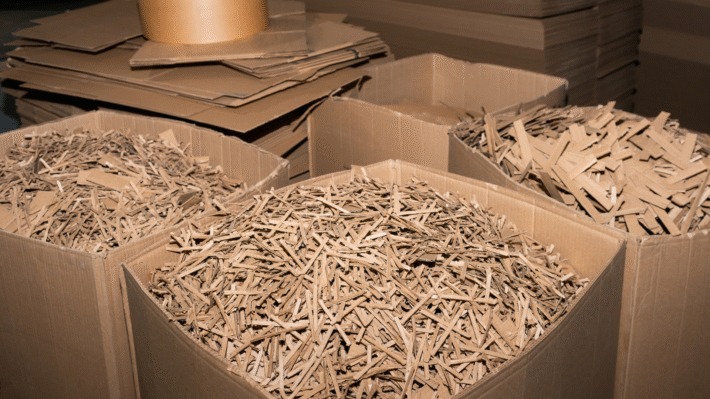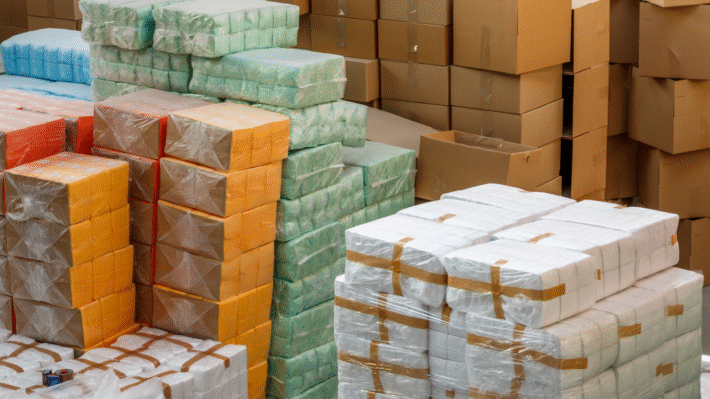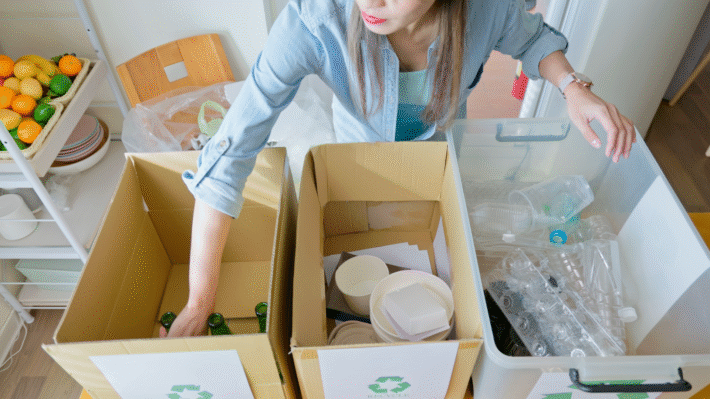Making Your Footprints Greener with Recyclable Bonding Agents for Footwear

Are your shoes ready to take a step towards a more sustainable future? Because creating circularity in footwear adhesives supply chain is more than a trending topic; it’s the bridge to a greener tomorrow! Imagine, no more heaps of discarded shoes polluting our dear Earth. Instead, let’s visualize footwear featuring recyclable bonding agents, designed for disassembly and remade through a circular supply chain. Today, our journey begins with the sticky problem of non-recyclable adhesives and the hope filled solution of recyclable bonding agents. As we delve into the heart of matter, we will discover how designing for disassembly, forging partnerships, and promoting consumer education, can reshape the landscapes of footwear adhesives. So, tie up those laces, and let’s stride towards a sustainable future, one shoe at a time! After all, the path to progress is always under construction, good thing we’re wearing our work boots!
The Problem with Current Footwear Adhesives
It’s an often overlooked fact – the adhesives holding together our beloved kicks pose a serious environmental challenge. They are like that stubborn kid who refuses to let go of their favorite toy; only this time, their favorite toy is our planet’s well-being. Let’s dive into the nitty-gritty of the problem.
Traditional Adhesives and Their Impact
Types of Traditional Adhesives
You might wonder – what is this fuss about some sticky stuff in my shoes? Well, for starters, traditional footwear adhesives are typically either polyurethane (PU) or polyvinyl acetate (PVA). These names might not ring a bell, but these adhesives take center stage in the footwear industry.
Polyurethane adhesives, for instance, offer excellent bonding with a plethora of materials like rubber, leather, and textiles used in making shoes. But here comes the catch – they pack a punch of harm to our environment.
Environmental Issues with VOCs
The culprit in these adhesives is something called Volatile Organic Compounds, or VOCs. These VOCs show up to the party uninvited and mingle around, causing issues like indoor air pollution and contributing to outdoor smog. They’re like those gatecrashers who spoil the fun for everyone else, except in this case, we’re talking about our planet’s health.
On top of that, PU and PVA adhesives are not recyclable. So, when your favorite pair of shoes have walked their last mile, the residues of these adhesives end up in landfills to stay there… forever. That’s one guest who overstays their welcome and leaves a mess behind!
Challenges Facing the Industry
Multi-Material Designs
The footwear industry loves multi-material designs. It’s like a sundae, with textures and materials of various types come together with a dollop of style on top. Sounds awesome, right? Only if these combined materials were easier to separate during recycling. But they’re not. Trying to separate them is like trying to unscramble an egg. A tricky, almost impossible task.
The saviour here could be efficient disassembly technologies. Yet, the reality is far from it. The multi-material design of shoes, coupled with a strong adhesive, presents a sort of an Achilles heel to footwear recycling efforts.
Lack of Recycling Infrastructure
Speaking of recycling, another big challenge slapping the industry in the face is the lack of a substantial recycling infrastructure capable of handling adhesive-bound footwear waste. It’s like showing up to a potluck dinner empty-handed. The system isn’t prepared to process and recycle all the multi-material shoes that are beyond their life span.
From the types of adhesives used to the difficulties posed by multi-material designs and limited recycling infrastructure, it’s pretty clear that the traditional footwear adhesive system is in dire need of a makeover. Perhaps it’s time we brought in a circular approach – one that ensures a product’s lifecycle doesn’t harm Mother Nature. Stay tuned to learn more about how a shift to a circular economy could turn things around.
Adopting Circular Economy in Shoe Design
Big question. Huge, in fact. How can we make shoe design more eco-friendly? Well, like solving a Rubik’s cube, it’s all about thinking in cycles. Puzzled? Stay with me, buddy. Get ready as we walk the talk on adopting a circular economy in shoe design.
Design for Disassembly
One thing’s certain, we’ve got to get smart about design for disassembly. Why so? Because we need shoes that can be easily pulled apart once they’ve outlived their purpose. We’re aiming for designs that can be as easily put together as, say, Lego bricks. Simple, right? Let’s break it down.
Creating Compatible Materials
Creating compatible materials is like the secret sauce in our green recipe. Our materials need to get along well, like peanut butter and jelly. They must be able to join forces, then part ways as needed without a fuss. Why’s that important? Because we need to recycle them separately. If we get this right, no shoe will ever be doomed to spend eternity in a landfill again. Now, that’s the kind of world I’d like to walk in!
Creating Reverse Logistics Systems
Next up, we need the right reverse logistics systems. This is all about getting our worn-out shoes back and making them into something new. That’s right, your old sneakers could get a second life as trendy sandals!
Collection and Take-Back Programs
A quick pit stop here. We really need to talk about collection and take-back programs*. Let’s face it, many shoes find their way into the trash because folks don’t know how or where to recycle them. Picture a world with “shoe recycling” boxes in every neighborhood, or even better, every shoe store handing out pre-addressed, postage-paid recycling bags. Now we’re talking!
Industry Collaborations
And we can’t walk this green path alone. Nope. We need industry collaborations. Shoe brands, manufacturers, even recycling companies need to put their heads together, or rather, put their sole-utions together! Together, they could create a footwear recycling revolution, making sure no shoe goes to waste.
Make no mistake, friends. This isn’t just a green fairytale. It’s a blueprint for a sustainable future, all starting with your humble shoe. Now, who’s lacing up for this green adventure? Let’s trot towards a circular economy in shoe design together!
Innovative Adhesives for a Greener Future
We can create a better, greener future for our footwear. How? By using innovative adhesives which brings both functionality to our shoes, and sustainability to our environment. Two game-changing options are breaking ground: Thermoplastic adhesives and water-based adhesives. Let’s take a closer look.
Exploring Thermoplastic Adhesives
Thermoplastic adhesives are making a grand entrance in the footwear industry. These are made up of polymers that soften when heated and harden when cooled. The beauty of these adhesives lies in their repeatability.
Benefits of Recyclability
Unlike traditional adhesives, which are typically one-and-done, thermoplastic adhesives can go through the heating and cooling process several times without losing their robustness. That means a shoe glued with thermoplastic adhesive can be pulled apart, recycled, and the adhesive reused, bringing us one giant leap closer to a circular supply chain.
Application Examples:
A great example of a brand using thermoplastic adhesives is New Balance. They have started using thermoplastic adhesives in their footwear manufacturing process, proving the feasibility and benefits of this innovative solution on a large scale.
Implementing Water-Based Adhesives
Water-based adhesives are another key player in our quest for circular footwear. Constructed primarily of water, these adhesives are much more environmentally friendly than their solvent-based cousins.
Reduced VOC Emissions
Did you know many traditional adhesives emit Volatile Organic Compounds (VOCs)? These VOCs contribute significantly to air pollution. Opting for water-based adhesives means significantly lower VOC emissions – better for our planet, and for our health.
Implementation Success Stories
Nike showcases a brilliant success story of water-based adhesives. They made the shift from solvent-based to water-based adhesives, substantially reducing their VOC emissions. By doing this, Nike has not only shown industry leadership but also illustrated how large-scale implementation of water-based adhesives is possible.
Starting with thermoplastic and water-based adhesives, we are paving the foundation for a future in footwear that marries innovation with sustainability. We can indeed have our shoes and wear them too – without costing the earth.
Crafting Recyclable Bonding Agents
Let’s spin the wheel of innovation and dive into the heart of sustainability—creating recyclable bonding agents for footwear.
Choosing the Right Materials
Recyclable and Biodegradable Options
Eureka! The age of standard, non-recyclable adhesives is quickly becoming a page in the history books. Here’s why. We now have materials that aren’t just recyclable, but also biodegradable. This means when shoes reach the end of their lifespan, they start a second life as a valuable resource rather than waste. Instead of languishing in landfills, these recyclable and biodegradable adhesives decompose safely, returning to Mother Nature and reducing their environmental footprint.
Bio-sourced Adhesives
But wait, there’s more! We can also craft quality adhesives from bio-sourced materials. These goodies from nature are more sustainable than petroleum-based alternatives, reducing dependency on finite resources. It’s like getting the best two-for-one deal, cutting down on environmental harm and leaning into renewable resources.
Ensuring Performance Standards
We all know that what glitters is not always gold. It’s not enough for adhesives to be green; they need to hold up under the day-to-day pressures of life on the move. And our next-generation adhesives are up to the challenge.
Testing for Strength and Flexibility
We’re putting these green glues through their paces. Strength and flexibility tests assure that these adhesives won’t fall apart under pressure. And we’re not stopping there. We’re doing all it takes to make sure that these adhesives can bend, stretch, and still hold tight, just like your favorite gymnast performing their solo routine – putting on a show while doing the heavy lifting.
Wear Resistance and Validation
And for the finale, we’re putting wear resistance to the test. By examining how these bio-based adhesives stand up to friction, we aim to ensure durability that rivals, if not surpasses, traditional adhesives. The proof, after all, is in the pudding. We’re validating these new-age adhesives in real-world settings, not just lab conditions, because let’s be honest, we wear shoes on streets, not just in sterile labs.
So there you have it, friends. We’re moving away from the reckless adhesive use of yore and stepping boldly into a future armed with sustainable, efficient, and hardy alternatives. A step here is a leap for mankind. Let’s lace up our boots and begin this exciting journey!
Building Partnerships and Looking Ahead
Step right up, folks, and join us on the next big wave of the shoe industry. Puzzled? Don’t be. We’re talking about a mission to make the footwear world cleaner, greener, and more circular. And you are our key partner.
Let’s face it. We can’t make this leap alone. Here’s where meaningful partnerships, bright ideas, and a forward-thinking vision come into play. Let me spin the yarn of how we’re building relationships and looking at the future with clear eyes.
Leading the Way with Industry Initiatives
Sit back and let me tell you a tale or two about some forward-thinking brands that are trading worn-out paths for greener pastures.
Success Stories from Brands
Tally-ho. Take a look at Adidas, a brand not just for gold medalists but also for green innovators. They’ve launched the Futurecraft Loop, a 100% reusable runner that’s rewriting the rules of the game. And oh, don’t forget Timberland. They’ve shaken things up with their “GreenStride” collection, featuring shoes made from responsible and renewable sources. Talk about a ‘major “heel”-turn’.
These brands aren’t just circling the bases—they are hitting the home runs. They’ve looked at the closetful of challenges and said, “We’re taking the step.”
Engaging in Future Research and Development
Got your attention now? Good. Because the story is just ramping up. We’re not resting on our laurels. We’re digging deep into our innovation bag and fishing out newer, better, and greener game plans.
Pioneering New Adhesive Technologies
Balancing performance and sustainability is like tightrope walking. It takes precision. And that’s where our R&D comes in. We’re testing advanced thermoplastic adhesives, exploring bio-based glues, and wrangling clouds to come up with water-based bonding solutions. The goal is a slam dunk—high performing, and environment-friendly adhesives.
Supporting Policy and Standards
We’re hip-deep in working out the points on our i’s and crossing our t’s. That’s right—we’re developing and backing procedures and criteria to ensure adherence to sustainable practices. Standards like making sure our materials make the earth look good, and not just your shoe rack.
Let’s band together, shall we, and take this walk towards a better tomorrow? Now, that’s a tale the future generations would love to hear.
Paving the Road to Sustainability
Taking a step towards a sustainable future involves saying goodbye to harmful practices of the past, and welcoming innovative, environmentally-friendly solutions. This is the vision for the future of footwear adhesives.
Vision for a Circular Adhesive Future
The future of adhesives could look much greener than it does now, through advances in design and technology.
Benefits of Design for Disassembly
Firstly, what if your footwear could be easily taken apart when it comes to the end of its life? This is the concept behind design for disassembly. Instead of dumping whole shoes into landfill, each component could be separated and reused or recycled. This comes down to smart and practical design, and the use of adhesives which allow this separation to take place easily. It’s about pairing function and environmental responsibility in perfect harmony.
Smart Adhesives and Emerging Technologies
Now, let’s add a layer of intelligence to our adhesives. Imagine “smart adhesives” that alert you when your soles start to wear out or respond differently depending on the conditions. This isn’t science fiction. Emerging technologies are already showing the potential to make this a reality, like the use of nanotechnology or bio-inspired materials.
Consumer Engagement and Environmental Benefits
But, these advancements aren’t just for the production line. Actively engaging customers in the journey towards greener footwear is key.
Raising Awareness and Education
An informed customer is a powerful agent for change. Raising awareness about the environmental impacts of footwear production, and how choosing shoes with recyclable adhesives can make a difference, is a step in the right direction. Education campaigns, informative labeling and certification can all contribute to this.
Understanding Metrics and Outcomes
Of course, we need to back up our promises with proof. Measuring the environmental impact of our efforts can help us ensure we are moving in the right direction. It’s not just about reducing harmful emissions during production; we also need to understand the full “life-cycle” of the adhesive, from birth to reuse.
So, as we take steps towards a future of sustainable footwear, remember this: it’s not just your footprints that matter. It’s also the footprints we leave on our world. Let’s make them sustainable together.



